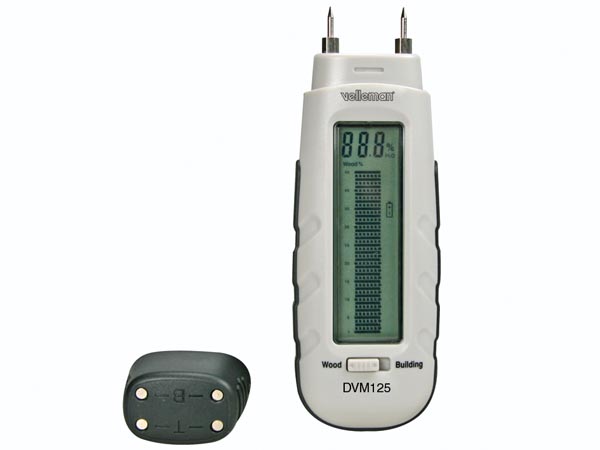I present some thoughts:
This device measures the moisture with which physical method ??
It feels that it is by conductivity ?? with two tips ??
There are direct special sensors of the humidity of the air in contact, for electrical capacity ,, other by absorption of microwave (more accurate, except metals), etc ..
Moisture is a complex topic!
http://fr.wikipedia.org/wiki/Humidit%C3%A9
http://www.omafra.gov.on.ca/french/crop ... rt08a2.htm
http://blog.trotec.com/fr-fr/instrument ... es-chapes/
see :
http://www.inforenovateur.com/document/ ... ygrometrie
I think we can make mistakes without realizing it.
The humidity of the ambient air is typically at 50 80% relative humidity in our region!
While this device does not measure the humidity, the less%. !!
My question physicist, it measures what, how !!
I feel that this is the volume fraction of liquid water in the material, not vapor in the air ??
Sure,
https://www.econologie.com/shop/humidime ... p-128.html
it says that information for this device:
Measure electrical resistance
therefore measuring the electrical resistance of the material decreases with humidity.
I ask the question, is the relation resistance towards humidity is the same for different materials?
The water resistance is a function of its ion content i.e. of the amount of dissolved salts !!
Also, if the material contains salts, the measurement will be distorted, with lots of salt, the actual amount of water will be lower than that measured !!
For example, if the house is near the sea with sea spray that pass under the tiles (even 500m sea), glass wool handles salt and false measurement, and more become hygroscopic loads of moisture from the air and becomes naturally non-insulating (such as salt leaky) !!
Cements are not all the same, the wood can contain more or less of salt!
If the insulation has been contaminated by salt water, the device will give more water in reality !! A check with various salts.
If water is in packets or drops that will not affect the resistance will be higher than if they touch (percolation) and therefore can be wrong.
It takes place the device perpendicular to the wood fibers !!
https://www.econologie.com/shop/file/Notice_dvm125.pdf
It's very complex, such as physical measurement !!
I personally think that the measure strongly pressing a liter of insulating out all the water is also valid:
4% gives 40cm3 is much !!
Below is 10% 100cc / liter, it would be good to compare this direct method to that of Velleman, to appreciate Errors!
The method of heat to 80 or 100 ° C to extract all the liquid water and condensed by cooling is the best yet simple to calibrate and realize mistakes as possible!
Finally measure the thermal conductivity of a sample is as simple, not too much heat because the water evaporates quickly. !!
A heated probe a little into the insulation and measuring the cooling rate of change of the insulation is a simple way to measure and reliable, in my opinion. This type of device does not have the usual air except thermo-differential analysis for chemistry, so sophisticated. !!
Yet the very low current price of microprocessors makes this possible for not more than the thermal resistance.
It would be useful for monitoring insulation in situ, whatever their condition, dry, wet, damaged, etc ..
On the other hand, it would be good to test the quality of the vapor barrier in situ, in cold weather with the Velleman, because then the insulation going from 20 ° C to 0 ° C from one side to the other, must have much more moisture condensed on the portions at T <10 ° C as soon as the slightest draft of air coming from regions at 20 ° C !!
It would measure the importance of the vapor barrier seal !! Often forgotten in the homes of more e10 to 15 years with insulation placed anyhow !!
.


